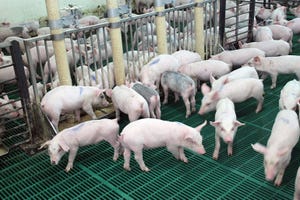The structure of the meat industry, stable for the past 25 years, changed in response largely due to new demands from consumers, according to the American Meat Institute
December 8, 2010

The structure of the meat industry, stable for the past 25 years, changed in response largely due to new demands from consumers, according to the American Meat Institute (AMI).
“In a consumer-oriented business such as the meat and poultry industry, you start with the customer,” says Mark Dopp, senior vice president of regulatory affairs and general counsel for AMI. “Our customers began sending strong signals that they wanted more consistent products, leaner products and niche products like natural meats or those that are free range. These demands necessitated a shift from our previous commodity mindset to a more focused, branded approach that delivers what consumers want. That’s what automakers have done. That’s what electronics manufacturers have done. And it was what our industry needed to do, too.”
To meet those expectations for branded meat and poultry products requires consistent raw materials to meet consumer expectations at the point of purchase, Dopp explains. That’s why livestock and poultry producers began entering into marketing agreements and contracts with packers and processors to provide animals raised in a consistent manner, using genetics and other production practices that could deliver a raw product to support the brand.
“Although some populist groups representing livestock producers who don’t like contracts or marketing agreements have sought to raise suspicions about the partnerships, these agreements are the very tools that have helped other livestock and poultry producers and packers and processors stay competitive in the domestic and international markets.”
As a result, the share of the consumer meat dollar that goes to meat and poultry companies has remained constant for the last two decades.
“It’s noteworthy that the most outspoken critics of industry structure and livestock and marketing agreements are those who choose to reject them. I respect their prerogative, that’s their choice. But they must respect the majority of livestock and poultry producers who choose to work in partnership with meat and poultry processors to provide a product that our restaurant and retail customers want and that consumers demand,” Dopp says.
Extensive reviews of meat industry competitiveness and structure are available on www.themarketworks.org.
You May Also Like



